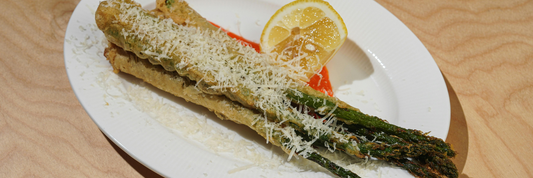In the food, retail, and logistics industries, plastic wraps are among the most versatile and cost-effective packaging solutions. From preserving food in restaurants, wrapping goods in warehouses, to protecting furniture during transportation, plastic wraps provide safety, neatness, and cost savings.
However, not everyone fully understands the different types of plastic wraps, how to choose the right one, and what eco-friendly alternatives are available. This article will guide you through everything you need to know to maximize efficiency and enhance your green brand image.
-
Types of Bubble Wrap for Packaging and Shipping
-
Different Types of Packaging and Their Uses – Best Packaging Solutions for Your Business
What is Plastic Wrap?

Definition & Characteristics
Plastic wrap is a thin, flexible, often transparent film used to cover or wrap products. It can lightly cling to surfaces or be tightly wrapped to secure items.
The three most common types are:
- Cling film – Thin, sticky wrap for keeping food fresh.
- Stretch wrap – Stretchable wrap used to secure pallets or goods during transport.
- Shrink wrap – Heat-shrinkable wrap that tightly conforms to products when heated.
Common Materials
- PVC (Polyvinyl Chloride): High transparency, excellent cling, often used for food but must meet safety standards.
- LDPE (Low-Density Polyethylene): Soft, durable, less clingy, ideal for products that don’t require airtight sealing.
- LLDPE (Linear Low-Density Polyethylene): High stretchability and tensile strength, perfect for stretch wrap.
- PVdC (Polyvinylidene Chloride): Excellent barrier against gas and moisture, helps food stay fresh longer.
Types of Plastic Wraps & Real-World Applications

Cling Film for Food (Clear plastic wrap for food)
- Applications: Wrapping meat, vegetables, fruits, and ready-to-eat meals in restaurants and supermarkets.
- Advantages: Retains moisture, blocks oxygen, reduces bacterial growth.
- Safety Tip: Choose certified “food-grade” wraps; avoid those containing harmful plasticizers like DEHA.
Stretch Wrap for Logistics (Plastic wrap packaging)
- Applications: Securing pallets and packages in warehouses or during shipping.
- Advantages: Keeps goods stable, dust-proof, and moisture-resistant, reducing damage risk.
- Types:
- Hand wrap – For small batches, applied manually.
- Machine wrap – For high-volume packaging lines.
Shrink Wrap for Product Packaging
- Applications: Packaging food, cosmetics, and retail products for protection and presentation.
- Common Materials: PVC shrink wrap (affordable, easy to use) and polyolefin shrink wrap (more eco-friendly, food-safe).
- Advantages: Fits tightly, protects from dust and moisture, enhances aesthetics.
Clear Plastic Wrap Bags & Wrap for Furniture and Shoes
- Plastic wrap for furniture: Protects against scratches, dust, and mold during moving or storage.
- Plastic wraps for shoes: Keeps footwear in shape and fresh during transport or long-term storage.

Comparison & Selection Guide
Plastic Wraps Comparison Table
| Type | Durability | Cling Strength | Transparency | Eco-friendliness | Cost |
|---|---|---|---|---|---|
| Food-grade cling film | Medium | High | High | Low – Medium | Low |
| Stretch wrap | High | Low | Medium | Medium | Medium |
| Shrink wrap | High | None | High | Depends on material | Medium |
| Furniture/shoe protective wrap | High | Low | Low – Medium | Medium | Medium |
Quick Selection Checklist
- Restaurants & supermarkets: Choose transparent, high-cling, food-grade cling film.
- Logistics companies: Opt for thick LLDPE stretch wrap with high tensile strength.
- Export businesses: Use polyolefin shrink wrap that meets international standards for long-term preservation.
Green Trends & Sustainable Alternatives

Biodegradable Plastic Wrap
- Materials: PLA (Polylactic Acid), PHA, and cellulose-based films.
- Benefits: Naturally decomposes in industrial composting facilities, reducing landfill waste.
- Limitations: Higher cost and limited availability compared to traditional wraps.
Beeswax Wrap
- How it works: Cotton fabric infused with beeswax, resin, and jojoba oil that clings to surfaces.
- Advantages: Reusable, biodegradable, and chemical-free.
- Drawbacks: Not suitable for hot foods or high-moisture storage.
Proper Recycling Methods
- Do not dispose of flexible plastic wraps in curbside recycling bins.
- Take them to designated plastic film drop-off points (often at supermarkets or recycling centers).
- Ensure wraps are clean and dry before recycling to prevent contamination.

FAQ – Frequently Asked Questions
Q1: Is plastic wrap safe to use in the microwave?
A: Only if labeled microwave-safe; avoid direct contact with food at high temperatures.
Q2: Does plastic wrap make food spoil faster?
A: No, when used correctly, it can extend shelf life by reducing oxygen and moisture loss.
Q3: Which type is most cost-effective for restaurants?
A: Food-grade cling film bought in bulk offers the best cost-to-use ratio.
Q4: Can plastic wrap be reused?
A: Technically yes, but it may lose cling strength and is not recommended for raw meats.
Conclusion
Plastic wraps remain a crucial part of modern packaging from keeping food fresh to securing large shipments.
By choosing the right type for your needs and exploring eco-friendly alternatives, your business can save costs, improve efficiency, and reduce environmental impact.
Looking for high-quality, eco-friendly plastic wraps? Contact our Green Packaging Solutions team for expert consultation and competitive pricing tailored to restaurants, supermarkets.




